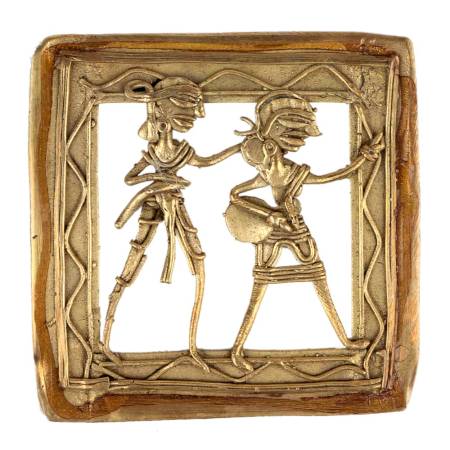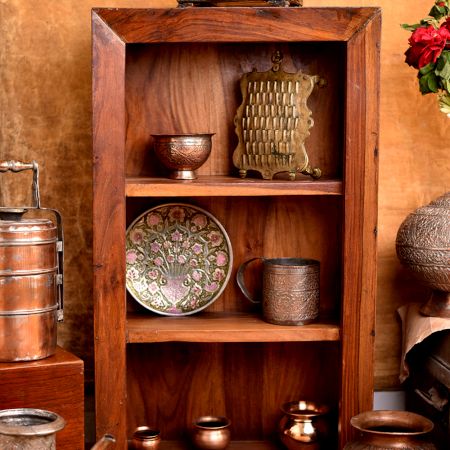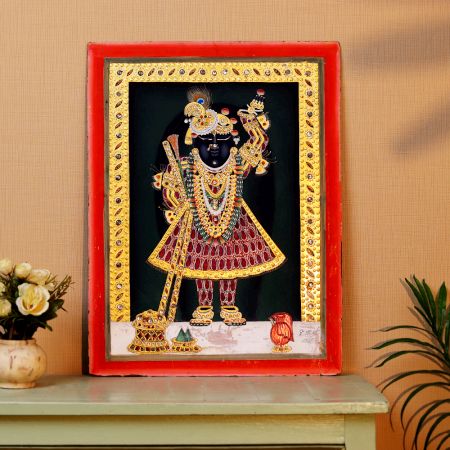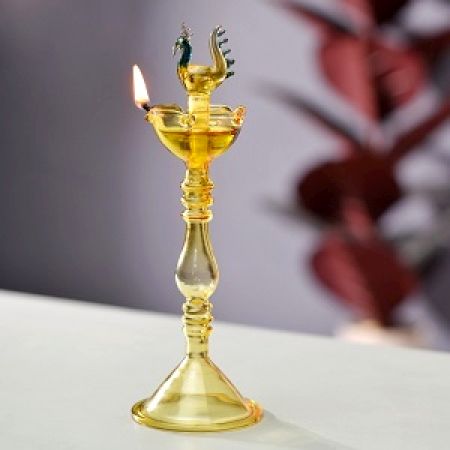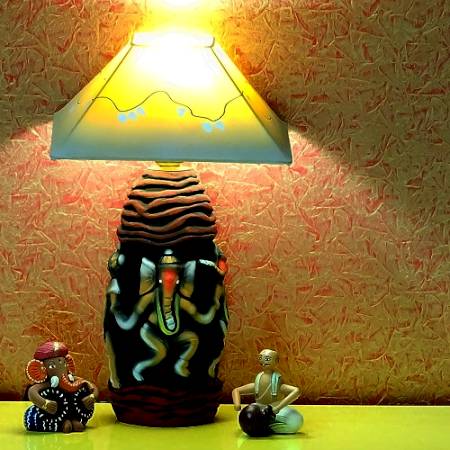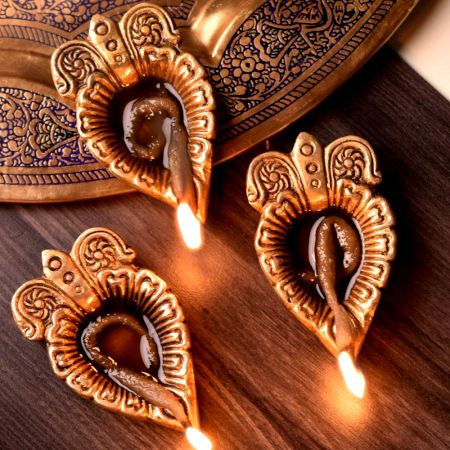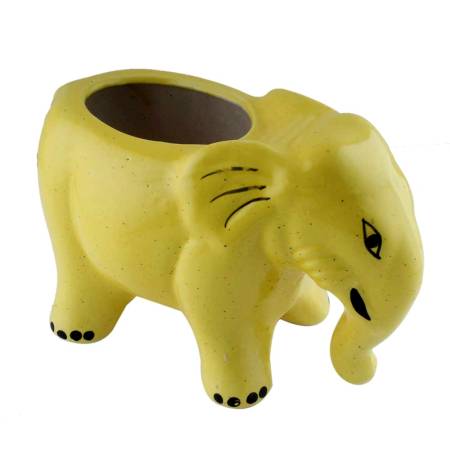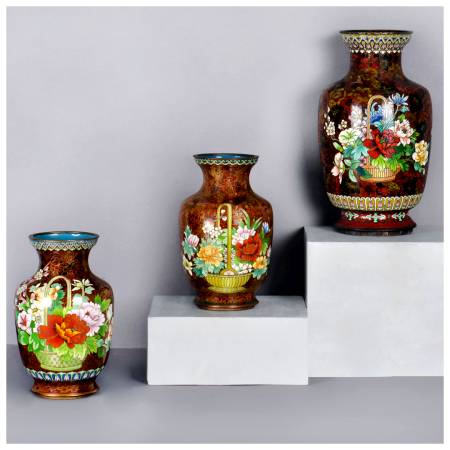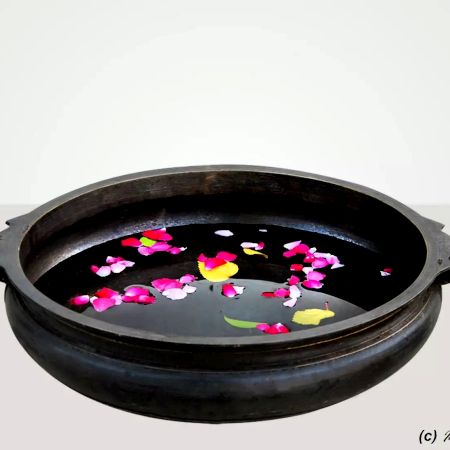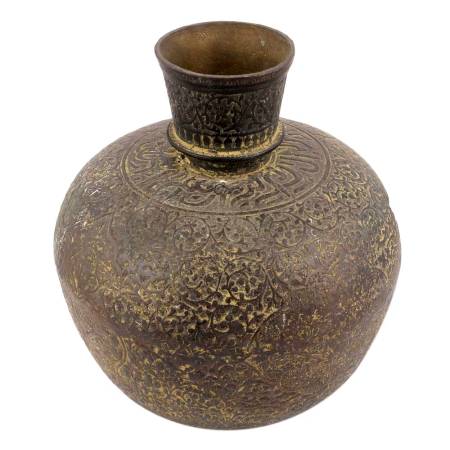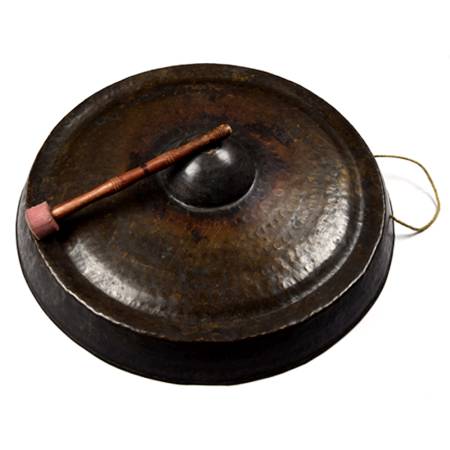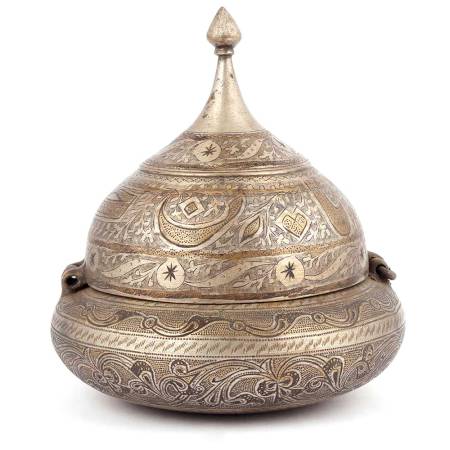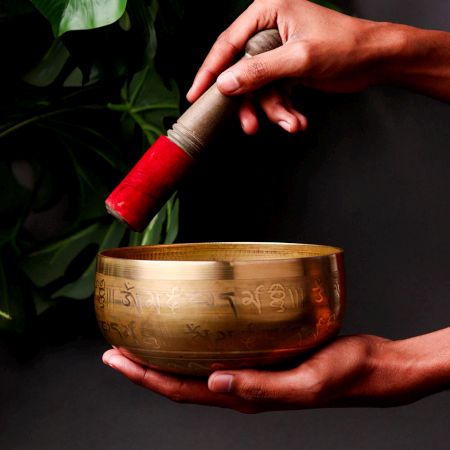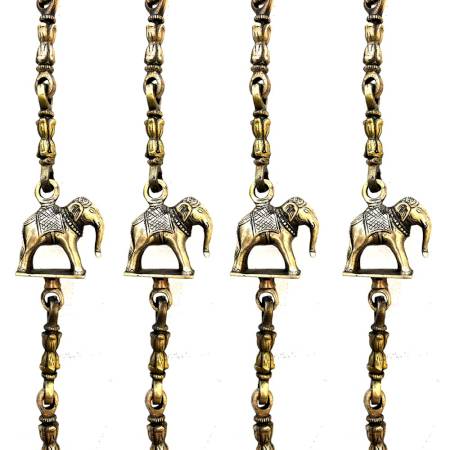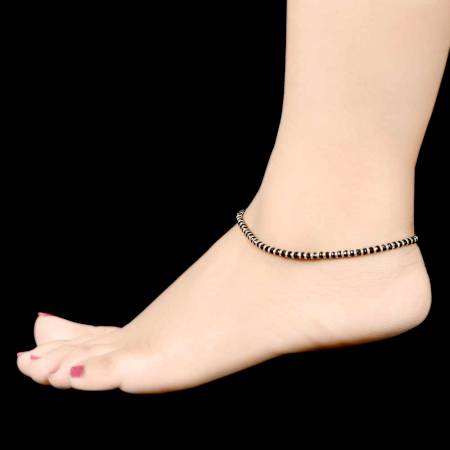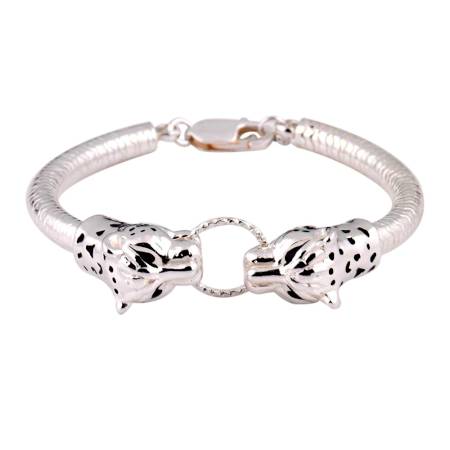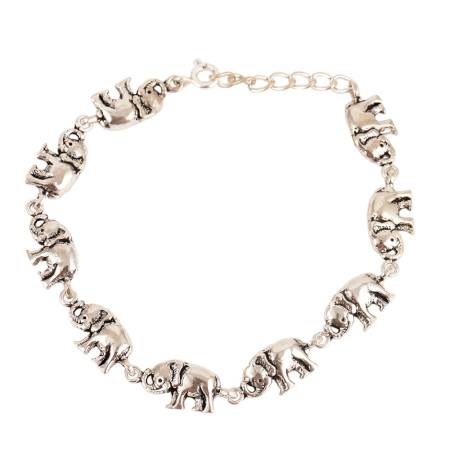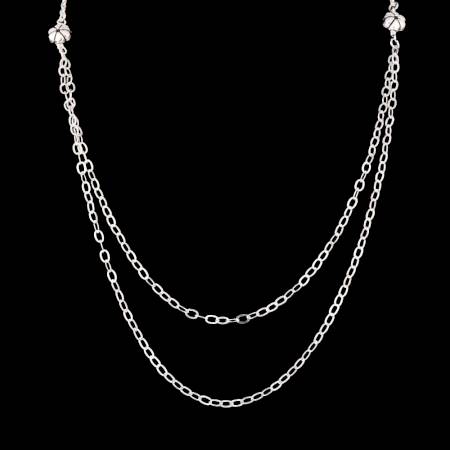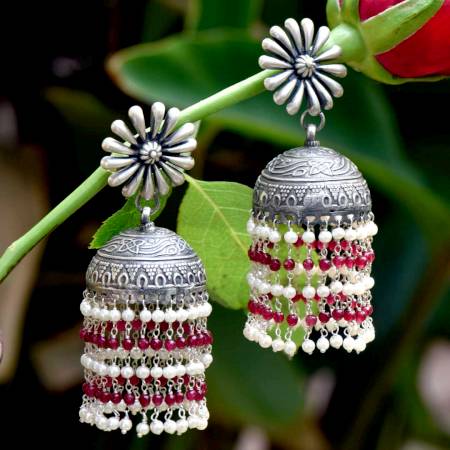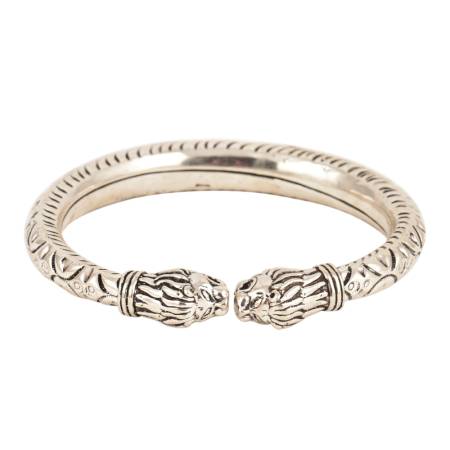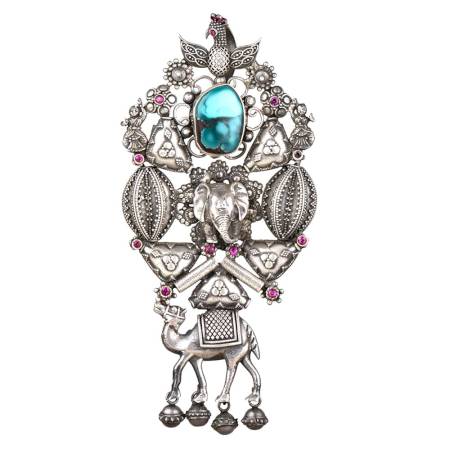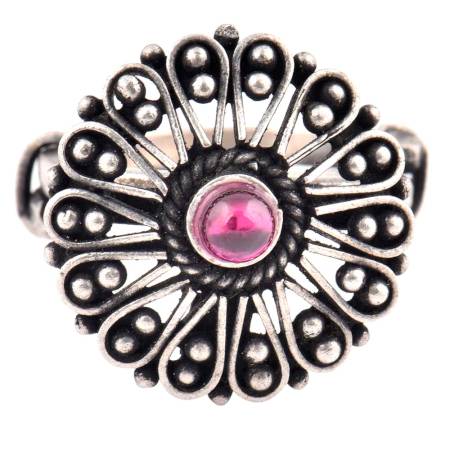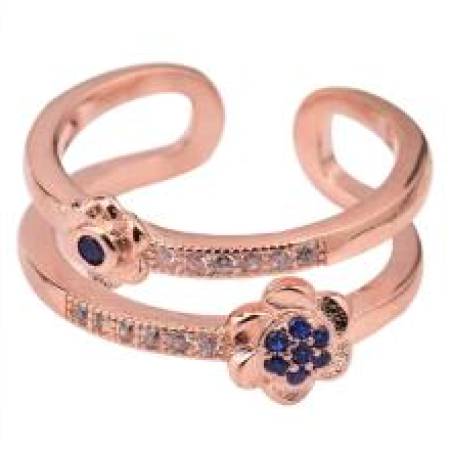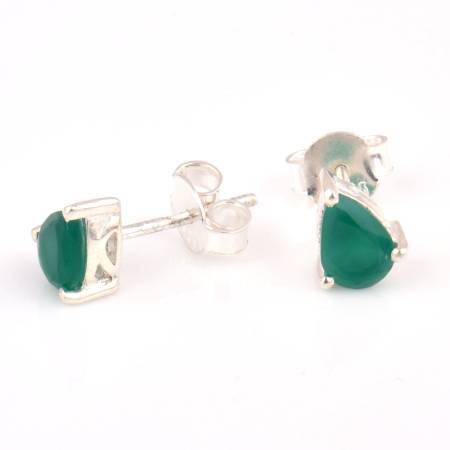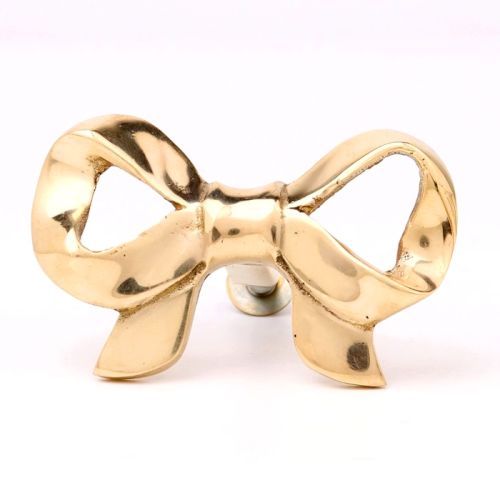General Understanding of Swing Chains
Swing chains form the silent backbone of every swing, the part most people don’t notice until it squeaks or rusts. They are more than links of metal, these chains hold rhythm, motion, and trust. Whether hanging from an old tree in an Indian courtyard, tied across wooden beams of a veranda, or stretched across a modern steel frame, their purpose remains the same: strength combined with freedom. They endure weather, weight, and time, yet carry a timeless essence of leisure. Swing chains connect structure with motion, stillness with movement, creating a dependable bridge between frame and experience.
What Is A Swing Chain?
A swing chain is the essential component that links seat to frame, giving both security and rhythm to the act of swinging. It is a series of interlocked metal loops, forged for tensile strength and flexibility. In playgrounds, porch swings, or indoor lounge swings, it provides that reliable suspension every rider depends upon. The swing chain is designed to handle continuous motion, impact forces, and outdoor exposure without losing stability. Beyond its physical form, it symbolizes trust. Parents fasten their children on swings knowing the chain will hold. It turns a simple plank or cushioned seat into a safe and rhythmic escape. A swing chain, in its simplicity, carries both utility and memory, making it indispensable in homes, gardens, and community spaces.
What Roles Do Swing Chains Commonly Serve?
Swing chains perform dual roles, structural and emotional. Structurally, they absorb tension, balance forces, and maintain equilibrium so the swing moves in harmony. Without them, the seat is merely static. Functionally, chains enable that back-and-forth momentum that defines swinging, distributing weight evenly to prevent sudden jerks. But the role is not limited to mechanics. Swing chains carry the weight of nostalgia. They remind us of summers spent in courtyards, park visits where children laughed endlessly, or evenings on a porch swing sharing stories. They embody leisure, offering release from stillness. In playgrounds, they serve utility, in homes, they serve comfort, in cultural memory, they serve freedom. This blend of support and sentiment makes swing chains irreplaceable across contexts.
What Are The Most Recognized Types Of Swing Chains?
Swing chains vary in form depending on their function and setting. Coated chains, often wrapped in plastic or rubber sleeves, are common in playgrounds because they prevent pinched fingers and reduce corrosion. Heavy-duty galvanized chains, with their zinc coating, resist harsh weather and are trusted in commercial parks and community spaces where strength is critical. Stainless steel chains appear in premium or designer swings, prized for their polish and resilience. Decorative chains, often stylized or powder-coated, are seen in porch swings, garden seats, or balcony lounge swings where appearance matters as much as durability. Each type represents a balance between safety, longevity, and aesthetic preference, giving options to fit both functional and emotional needs.
Why Are Swing Chains Still Preferred Today?
Swing chains endure because they combine practicality with timeless charm. They are straightforward in design, easy to maintain, and exceptionally durable compared to ropes or synthetic cords that fray under stress. Chains withstand sun, rain, and constant use without losing integrity, making them perfect for both outdoor and indoor use. But their preference is not only technical, it is cultural. Chains evoke the visual of childhood parks, the gentle creak of a porch swing, or the grace of garden decor. They merge strength with sentiment, turning functional metal into an object tied to memory. In modern times, they still symbolize simplicity, offering both play and peace.
Construction, Materials & Tools for Swing Chains
Swing chains are born out of craftsmanship where strength is engineered into every link. Traditionally, blacksmiths forged steel loops, ensuring each weld could endure repeated pulls. Over time, the craft moved into industrial manufacturing, but the essence, durability and safety, remains constant. The material matters most: galvanized steel prevents rust in monsoons, stainless steel promises longevity, while powder-coated finishes add style to strength. Yet chains are only part of the story. Seats and connectors complete the system. Bolts, hooks, and fasteners anchor the experience, while wooden, plastic, or cushioned seats define comfort. Together, they form a union of structure and ease.
How Were Swing Chains Traditionally Made?
Historically, swing chains were forged by hand, link by link, in village workshops and blacksmith forges. Iron or early steel was heated, bent into loops, and hammered closed, with welds reinforcing weak points. The emphasis was always on longevity because swings were expected to last generations, not just seasons. In rural India, chains often carried rustic charm, hanging from neem or banyan trees where children gathered. Over time, industrial methods took over, producing uniform steel chains with precision welding. But the spirit of tradition remains, the intention of creating links that resist time and play. The old hand-forged chains echo cultural craftsmanship, while modern versions reflect efficiency and consistency. Both, however, serve the same unwavering purpose: safety through strength.
What Materials Are Commonly Used?
Swing chains today are crafted from metals chosen for strength, weather resistance, and longevity. Galvanized steel, coated with zinc, is a popular choice for playground swings as it withstands rain and prevents rusting. Stainless steel, stronger and shinier, is used in luxury porch or lounge swings where both durability and appearance matter. Powder-coated chains, often available in black, bronze, or custom colors, add a layer of personality to the swing, making them blend with garden decor or interior styling. Each material carries its own cultural presence, galvanized steel for rugged outdoor parks, stainless for polished urban balconies, and powder-coated for stylish home settings.
What Role Do Seats And Connectors Play?
Swing chains alone are incomplete without their counterparts: seats and connectors. The connector, hooks, bolts, and fasteners, creates the secure bond between chain and frame. It ensures stability and prevents sudden detachments. The seat, whether a simple wooden plank, a molded plastic base, or a cushioned lounge seat, defines comfort and experience. A sturdy seat distributes weight evenly, while connectors maintain balance during motion. Together, they form a trinity, frame, chain, and seat, without which the swing cannot function. In cultural spaces, such as traditional Indian courtyards, rope or wooden swings often evolved into chain-linked seats, reflecting both modern durability and retained heritage. Thus, seats and connectors elevate swing chains from bare mechanics to complete experiences.
Safety, Use & Design of Swing Chains
Swing chains stand at the intersection of safety and experience. Every link is engineered to hold weight, manage stress, and offer that rhythmic glide without compromise. Whether fixed in playgrounds, adorning porches, or completing therapeutic swings, they represent a union of function and intent. Their design reveals priorities, from the strong industrial finish in children’s play areas to the stylized comfort of home seating. A swing chain is never just metal. It is trust shaped into form, carrying both technical precision and emotional reassurance. Its presence ensures that leisure remains safe, reliable, and deeply connected to everyday living.
What Purposes Do Swing Chains Aim To Serve?
Swing chains exist to serve both function and feeling. At their core, they provide structural support, connecting seat to frame with reliable endurance. In children’s playgrounds, they ensure safe recreation by meeting rigorous safety standards, absorbing shocks, and carrying varying loads with ease. On porches, they become companions of leisure, where families gather in conversation, and weight-bearing strength is paired with style. In therapeutic contexts, such as sensory swings, chains are tailored for stability and controlled movement, offering calm to those who need it. Across these spaces, the purpose remains layered: they are designed to safeguard bodies, foster relaxation, and evoke freedom. The swing chain is not a background detail but the central element that defines the experience. It bridges design with intent, showing that safety, comfort, and cultural memory can exist together within a single crafted component.
How Do Chains Reflect Intent In Design?
Design reflects the user’s needs, and swing chains embody this principle. Playground swings demand strength and adherence to standards like ASTM, prioritizing durability over aesthetics. Their design reflects protection, with coated finishes to prevent pinches and resist rust. Porch swings take another path. Here, comfort and visual harmony matter, so chains are chosen for style, weight-bearing assurance, and how they blend with wooden or metal seating. Therapeutic swings demonstrate yet another intent: their chains must deliver stability, controlled motion, and sensory balance for users seeking calm. Each design decision carries meaning, balancing structure with experience. In essence, the design of swing chains is never generic, it mirrors the very space it serves, be it play, leisure, or therapy. This layered approach ensures that the swing chain is both functional and symbolic, a crafted piece that adapts to context while remaining central to safety and rhythm.
How Do Length, Weight, And Chain Thickness Influence Swinging?
The physical dimensions of a swing chain define the entire swinging experience. Length governs arc and height, shaping whether the movement feels expansive and free or contained and gentle. Longer chains allow wider arcs, ideal for playground thrill, while shorter chains give controlled rhythm suited to porches. Thickness and grade determine strength. A heavier chain supports greater loads, ensuring both safety and stability. This directly impacts who can use the swing, from children to adults or groups sharing a seat. Weight distribution plays its part too, with balanced chains preventing uneven sway or strain on mounts. Historically, thicker chains became essential as swings shifted from children’s play to shared family leisure. Today, technical specifications like tensile strength and load-bearing capacity ensure safety, but their influence is also sensory. They decide whether the swing feels light and playful, or steady and grounding. In both mechanics and feeling, dimension is destiny.
Purchase, Collection & Practical Investment in Swing Chains
Buying a swing chain is not merely a transaction, it is an investment in safety and experience. Each chain carries specifications that influence longevity and comfort. Hardware stores cater to basic needs, while playground suppliers focus on certified strength, and online retailers provide modular convenience with fittings. The choice is practical, yet it also reflects personal intent. A family adding a porch swing seeks reliability with charm. A school installing playground swings demands tested endurance. Purchase becomes both functional and emotional, a decision that safeguards joy while ensuring trust across years of use and memory.
Where Can You Buy Swing Chains?
Swing chains are widely available, but the best choice depends on need and setting. Hardware stores provide general-use chains suitable for small garden or porch swings, offering affordability and easy accessibility. Playground equipment suppliers specialize in chains designed for rigorous use, often with protective coatings and compliance with safety standards. Online retailers broaden the field, offering chains with modular fittings, corrosion resistance, and decorative finishes for residential use. Each option carries its own context. Hardware for the everyday, suppliers for institutional needs, and online platforms for personalization. What remains common across these spaces is the chain’s purpose, ensuring safety while complementing decor. Buyers today also value convenience, preferring chains that are easy to install or replace. Thus, the act of purchase is more than procurement, it is a thoughtful choice guided by safety, style, and long-term reliability.
How Can You Verify Strength And Authenticity?
Verification begins with certifications. Swing chains meant for public or institutional use must meet ANSI or ASTM standards, which guarantee load-bearing reliability and safety compliance. These markings are signs of tested authenticity, offering peace of mind for parents, schools, or communities. Alongside certification, visual checks matter. A genuine swing chain shows no weak welds, uneven links, or unfinished edges. Rust-resistant finishes such as galvanization or stainless steel coatings signal durability against weather. Buyers should also consult load-bearing specifications, which define the maximum safe weight. In practice, a porch swing chain with a certified finish tells a story of safety and trust, while a playground chain with stamped standards embodies reliability. In cultures where swings symbolize leisure and family bonding, ensuring authenticity is not a detail but a necessity. The process of verification assures that the swing chain is not only functional but worthy of carrying memory and joy.
What Makes A Swing Chain A Worthwhile Choice?
A swing chain earns its value by balancing durability, safety, and low maintenance. Unlike ropes, which fray and weaken, or synthetic materials, which degrade in sun and rain, chains offer resilience over decades. Their design requires minimal care beyond inspection and occasional treatment against rust. For families, this translates into long-lasting porch or garden seating. For public spaces, it ensures reduced replacement costs and consistent safety. But worth is not measured only in utility. The swing chain holds cultural weight, becoming part of rituals of play, rest, and gathering. It transforms into an heirloom in homes where porch swings are shared across generations. In such contexts, choosing a strong, authentic swing chain becomes more than a practical investment. It becomes a commitment to experiences yet to come, a choice that blends material strength with emotional permanence, making it invaluable across both private and public spaces.
Care, Maintenance & Preservation of Swing Chains
Swing chains last for years when given the attention they deserve. Proper care involves regular inspection, timely cleaning, and protective measures against weather. Rust is the most common threat, and preventive coatings or lubricants slow its progress. While these chains are built for strength, even a single weak link can compromise safety. Replacement should always come before repair when visible damage appears. Preservation, then, is both technical and cultural. A well-maintained chain does not just support motion, it safeguards traditions of leisure, ensuring that swings continue to offer comfort and freedom across seasons and generations.
How Do You Properly Maintain Swing Chains?
Maintenance begins with routine checks. Swing chains should be inspected for rust spots, cracks in links, or any signs of thinning metal. Cleaning with mild soap and water helps remove dirt, while a protective spray or light lubricant shields against moisture. In humid climates, where corrosion appears quickly, regular attention is crucial. Replacement must be immediate when damage is visible, since compromised links place safety at risk. Beyond function, care reflects cultural responsibility. A swing in a courtyard is not just furniture, it is part of family rhythm, and maintaining it preserves shared spaces of joy. Modern coatings like galvanization or stainless steel reduce effort, but no chain is fully immune. In truth, maintenance is a simple ritual of respect. It ensures that the chain remains dependable, carrying both weight and memory without interruption, season after season.
What Frames And Mounts Best Complement Swing Chains?
The chain is only as reliable as the structure that holds it. Frames of treated hardwood or powder-coated metal provide strength and resistance to outdoor wear. A frame must be designed to match the chain’s load-bearing capacity, ensuring no part of the system is under strain. Mounting hardware such as strong hooks, eye-bolts, or S-links completes the connection. Each piece matters. A well-built wooden porch frame enhances rustic charm, while steel supports in playgrounds prioritize durability. In cultural terms, the frame shapes the swing’s identity. A village swing hanging from a banyan tree branch carries one memory, while a modern balcony swing framed in steel carries another. The takeaway is clear: chain, mount, and frame form a trinity of safety. When chosen together with balance, they not only support weight but elevate experience, merging technical reliability with aesthetic harmony.
Can Old Chains Be Restored?
Restoration is limited when it comes to swing chains. Light rust may be sanded away, and a protective coating reapplied, but deeper corrosion signals weakness within the links. Once metal loses integrity, it cannot be trusted to bear weight safely. This is where replacement must take precedence. Still, the emotional urge to restore old chains is strong, especially in family homes where a porch swing carries memory. In such cases, the chain itself may be kept as a relic, while a new chain ensures safety. The cultural rhythm continues with renewed strength, while sentiment is preserved in the background. In practical terms, replacement is often more cost-effective than repair. Modern chains are designed for longevity and are readily available. The larger truth is this: chains are guardians of safety. Compromised guardians must step aside, so the joy of swinging can remain both carefree and secure.
What Are Common Damages Swing Chains Suffer Over Time?
Swing chains age under pressure and weather. The most common damage is rust, especially in humid or coastal climates where moisture accelerates corrosion. Links may wear thin from repeated friction, losing their original thickness. Deformation occurs when chains are overloaded, bending links into unsafe shapes. Cracks may also appear in poorly welded joints, though this is less common in modern manufacturing. Each form of damage is a warning, an interruption in the chain’s promise of safety. Across playgrounds, porches, and gardens, damaged chains can shift joy into danger if ignored. The responsibility of care ensures that weakness never overshadows the rhythm of leisure.
Home & Outdoor Styling With Swing Chains
Swing chains contribute to more than safety, they shape atmosphere. In porches, they invite long conversations. In backyards, they offer playful rhythm. In gardens, they blend into design, creating moments of pause within nature. A swing chain defines both function and emotion, making a space feel lived-in and welcoming. Its finish and form influence decor style, rustic in wood-heavy spaces, sleek in modern courtyards, or classic in traditional play areas. This adaptability makes swing chains more than utilitarian objects. They become visual threads that stitch leisure into home and outdoor landscapes, balancing strength with charm.
How Can Swing Chains Influence A Space?
A swing chain is both anchor and accent. It grounds the swing in safety while contributing to the character of the surrounding space. In porches, chains add a sense of permanence, signaling reliability and comfort. In gardens, they create visual movement, shimmering with weather and light, turning leisure into a decorative feature. In playgrounds, chains are the silent assurance that children’s joy will remain unharmed. Beyond function, their presence conveys warmth, inviting interaction. A home with a swing carries an unspoken message: this is a space where stories unfold, where rest and play coexist. In many cultures, swings symbolize festivity and seasonal celebration. Chains extend that meaning into everyday life, blending practicality with charm. Their influence is subtle yet transformative, reshaping not only the physical environment but also the emotional rhythm of the people who inhabit it.
What Styles Pair Well With Swing Chains?
Swing chains adapt to varied aesthetics, shaping spaces according to context. Rustic or farmhouse porches favor heavy chains in dark finishes, complementing wood textures and open verandas. Modern garden seating often uses sleek stainless steel chains that echo minimalism while resisting weather. Traditional playgrounds embrace galvanized chains, designed for safety yet neutral enough to blend with their surroundings. Each style pairing carries cultural cues. A rural home evokes tradition with thick iron chains, while an urban balcony reflects modernity with polished fittings. These stylistic choices go beyond appearance, they define how swings feel within the larger design. When paired thoughtfully, swing chains become harmonies within decor, enhancing not just safety but ambience.
How Do You Choose The Right Chain?
Choice depends on context, material, and intent. For homes, weight capacity is key, ensuring the chain supports all who might share the seat. Finish matters too. A galvanized chain is practical outdoors, resisting rust, while a powder-coated chain adds style, merging safety with visual charm. Stainless steel, often seen in modern spaces, promises longevity with minimal upkeep. In playgrounds, compliance with safety standards outweighs aesthetics, making certified chains the default. Culturally, choice reflects identity. A family selecting ornate porch chains is shaping their leisure space as much as their memory. The right chain is not only strong, it is suited to its environment. That decision anchors comfort, decor, and heritage in one seamless choice.
Cultural Impact & Historical Legacy of Swing Chains
Swings have lived in human culture for centuries, appearing in rituals, art, and leisure across civilizations. Chains transformed them, bringing durability where rope once frayed. They became markers of safety while sustaining the cultural essence of swinging. In India, swings were tied to seasonal festivals like Teej, where motion symbolized joy and abundance. In Europe, swings appeared in gardens as symbols of leisure. With the rise of industrial metalwork, chains replaced ropes, adding permanence to tradition. The legacy of swing chains is more than mechanical evolution. It is cultural continuity, a bridge between ancient rituals and modern recreation.
What Is The Historical Significance Of Swing Chains?
Swing chains represent the moment where tradition met innovation. Rope was the original medium, simple yet fragile, prone to weather and wear. Chains changed this, ensuring swings could last across years without constant replacement. This shift did not erase tradition, it reinforced it. Swings remained cultural symbols of leisure, but they now carried resilience. In India, the festival swing tied to monsoon celebrations gained new strength with chain links. In Victorian gardens, metal swings reflected elegance and modernity. The significance lies in how chains preserved cultural practices while enhancing safety. They embody adaptation without loss, keeping rituals intact while meeting the needs of modern life. Historically, swing chains are not only stronger than rope, they are stronger as symbols. They show how cultures safeguard joy by embracing materials that endure.
How Did Different Cultures Use Swings?
Cultures across the world wove swings into their traditions. In India, swings appeared in courtyards and during festivals, often decorated with flowers and used as symbols of prosperity and love. Rope eventually gave way to chain, extending their life in monsoon-heavy climates. In China, swings became part of spring festivities, associated with renewal. In Europe, swings in noble gardens reflected elegance and leisurely pace, often crafted with chains that matched ornate surroundings. Each culture shaped swings according to environment and value, but the core meaning remained leisure, celebration, and connection. Chains only deepened these meanings by ensuring continuity. They carried festivals beyond seasons, ensuring swings remained present in homes, rituals, and memory. Cultural use shows that swings are more than amusement, they are shared symbols. Chains safeguarded this universality, allowing diverse cultures to hold onto swings while moving with time.
Which Innovators Shaped The Development Of Swing Designs?
The modern swing owes much to industrial metalworkers who refined chain-making techniques, creating strong, uniform links. Playground safety advocates of the late nineteenth and twentieth centuries standardized designs, ensuring chains met strict guidelines to prevent accidents. Furniture designers added their influence, creating porch swings and lounge swings that balanced utility with decor. Each innovator contributed to the chain’s role as both safe and stylish. Their combined work moved swings from fragile rope suspensions to durable, versatile furniture and play structures. Without these figures, swings might have remained occasional amusements. With them, they became fixtures of homes, parks, and cultural memory. Innovators did not invent the joy of swinging, but they ensured it could be experienced safely, widely, and beautifully.
Emotional & Symbolic Value of Swing Chains
Beyond mechanics, swing chains carry deep emotion. They connect generations, turning simple seating into spaces of storytelling and memory. A porch swing chain creaks with familiarity, while a playground chain echoes with children’s laughter. Families pass them down as symbols of comfort and continuity. To gift a swing with its chains is to offer not just furniture but an invitation to bond. Chains symbolize reliability, the unseen strength beneath shared moments. Their symbolism reaches further, embodying carefree joy, grounding calm, and cultural permanence. Swing chains hold more than weight, they hold meaning.
Can Swing Chains Be Meaningful Gifts?
Yes, gifting swing chains, especially as part of a porch or garden swing, carries rich symbolic value. It represents not only leisure but trust, comfort, and continuity. To give a swing is to offer shared time, a place for conversations, and moments of peace. In weddings or housewarmings, such a gift can symbolize harmony and foundation. Families gifting swings across generations extend legacy, making chains not just functional but sentimental. A swing chain embodies strength, it holds weight reliably, mirroring the bond between giver and receiver. This symbolic echo transforms a practical object into a meaningful gesture.
What Emotional Value Do Family Swing Sets Hold?
Family swings often evolve into heirlooms, carrying stories across generations. A backyard swing where children played becomes a place of nostalgia when adults return years later. Porch swings hold memories of quiet evenings, festivals, and family gatherings. These emotional layers attach not to the seat alone, but to the chain that held everything steady. The creak of an old chain becomes soundscape of memory. Families preserve them as symbols of permanence and identity. Emotional value grows with use, making chains cultural anchors within homes. They do not only hold weight, they hold memory and belonging.
Why Do Swing Chains Bring Connection?
Swing chains symbolize return to simplicity. Their steady rhythm connects people to carefree moments of childhood and festivals of joy. They link generations, as grandparents, parents, and children share the same motion and memory. The chain itself is unassuming, yet it bridges time, carrying laughter, comfort, and continuity. In design, chains connect seat and frame. In symbolism, they connect people. This dual role explains why swing chains feel more than mechanical. They create space for relationships to strengthen and stories to unfold, weaving connections that endure beyond the swing itself.
Frequently Asked Questions (FAQs)
What Defines A Swing Chain?
A swing chain is more than a metal link. It is a carefully engineered connector that transforms motion into safety and rhythm. Built of interlinked steel loops, each section distributes weight evenly, preventing strain on any single point. This design ensures not only balance but also durability against the repeated arcs of movement. In playgrounds, porches, or gardens, the swing chain becomes the invisible backbone that carries trust. It allows the joy of flight, the calm of gentle rocking, and the assurance that every sway is supported by strength woven into its very structure.
Can Swing Chains Be Recreated Authentically Today?
Yes. Authenticity today rests on a blend of tradition and modern engineering. Where earlier blacksmiths forged and welded links, modern manufacturers now standardize production with precision machines, ensuring uniform strength across every loop. Coatings such as plastisol prevent finger pinching, while galvanization adds weather resistance, extending the chain’s life in outdoor conditions. The authentic recreation lies not only in form but in intention—chains that echo history while meeting contemporary safety standards. A child on a school swing or an adult resting on a porch can trust that the experience remains faithful, secure, and timelessly genuine.
How Do You Protect Swing Chains From Rust And Weather Damage?
Protection begins with the right material. Galvanized steel and stainless steel resist moisture, while powder or plastisol coatings add extra shields against rust. Yet, protection does not end at purchase. Regular maintenance is essential. Owners should inspect chains for discoloration or rough textures, signs of corrosion beginning to surface. Applying protective sprays or lubricants forms an invisible layer against the elements. In regions with heavy rain or salt air, such vigilance becomes part of the swing’s lifecycle. With care, a swing chain not only resists decay but carries forward its promise of safety and reliability for years.
Are Swing Chains Still Relevant In Modern Playgrounds And Decor?
Yes, their relevance is undeniable. Swing chains remain the preferred suspension system because they balance safety with adaptability. In playgrounds, they comply with international standards, offering tested load-bearing strength. In homes, they shift roles, becoming aesthetic companions to porch swings, lounge chairs, or even indoor hammocks. Their industrial sturdiness complements rustic, modern, or minimalist spaces, turning function into style. Beyond design, the cultural memory attached to swings—festivals, childhood, leisure—keeps chains emotionally present. They are not just mechanical components but enduring symbols of trust and continuity, bridging generations while anchoring both recreation and interior decor choices.
Can Swing Chain Designs Inspire Other Furniture Or Decor?
Absolutely. The principle of suspended comfort has inspired countless furniture forms. Hanging chairs rely on the same physics of weight distribution and motion. Hammocks, though woven from fabric or rope, borrow stability ideas refined through chain design. Modern architects and interior stylists even adapt chain suspension for floating beds, garden swings, and light fixtures, where strength meets elegance. The chain becomes not only a tool of utility but a muse for creativity. Its simple interlinked pattern represents resilience, flexibility, and aesthetic repetition, qualities that extend seamlessly into both functional furniture and decorative imagination.
